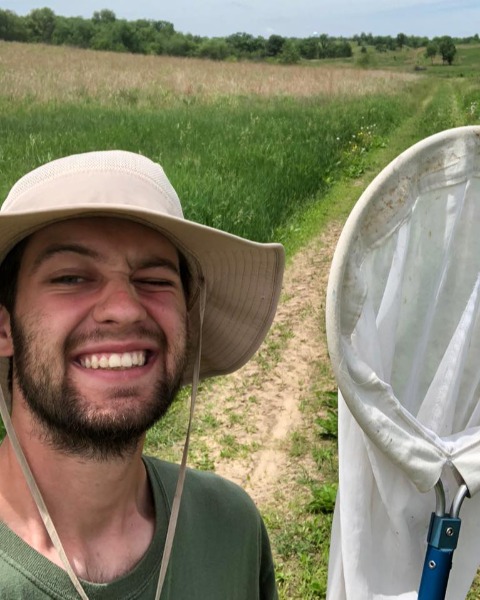P-IE
10-Minute Paper
10-min: P-IE, Pollinators and Pollination
Flower and habitat preferences of the critically endangered rusty patch bumble bee (Bombus affinis) on a 4,000 acre tallgrass prairie preserve
On-Demand

Chandler Dolan
Lisbon, IA

Sean R. Griffin
University of Texas at Austin
Austin, Texas
Bethanne Bruninga-Socolar
Albright College
Reading, Pennsylvania
Josh Paul Klostermann
University of Missouri
Columbia, Missouri
Presenting Author(s)
Co-Author(s)
Bombus affinis, commonly known as the Rusty-patched bumble bee, is a critically endangered species in the Northeastern and Midwestern United States. Prior to 1996 this species was extremely common throughout its range, but has since become increasingly rare. Sightings are now most frequently reported in urban areas of the Upper Midwest, with comparatively little known about its current distribution in natural and semi-natural areas. We searched for B. affinis in high-quality habitat at the Nachusa Grasslands (IL), a preserve of over 4,000 acres of restored and remnant tallgrass prairie, upland forest, oak savannah, and wetlands. We surveyed for B. affinis using both standardized bumble bee surveys as well as haphazard surveys that allowed us to focus on plant species and habitats of particular interest. We detected B. affinis a total of 19 times over 183 standardized and 20 haphazard surveys foraging on various plant species in varying habitats throughout the preserve. B. affinis was observed foraging predominantly on Monarda fistulosa (Lamiaceae) and Eutrochium purpureum (Asteraceae), similar to the foraging habits of other common bumble bees at our site like B. impatiens, B. griseocollis, B. auricomus, and B. vagans. We also observed B. affinis foraging in variable habitat types including open prairie, forest edges, and wetlands. Therefore, we recommend managing B. affinis habitat by including forb species used by a variety of bumble bee species and including a variety of habitat types throughout a given site.

